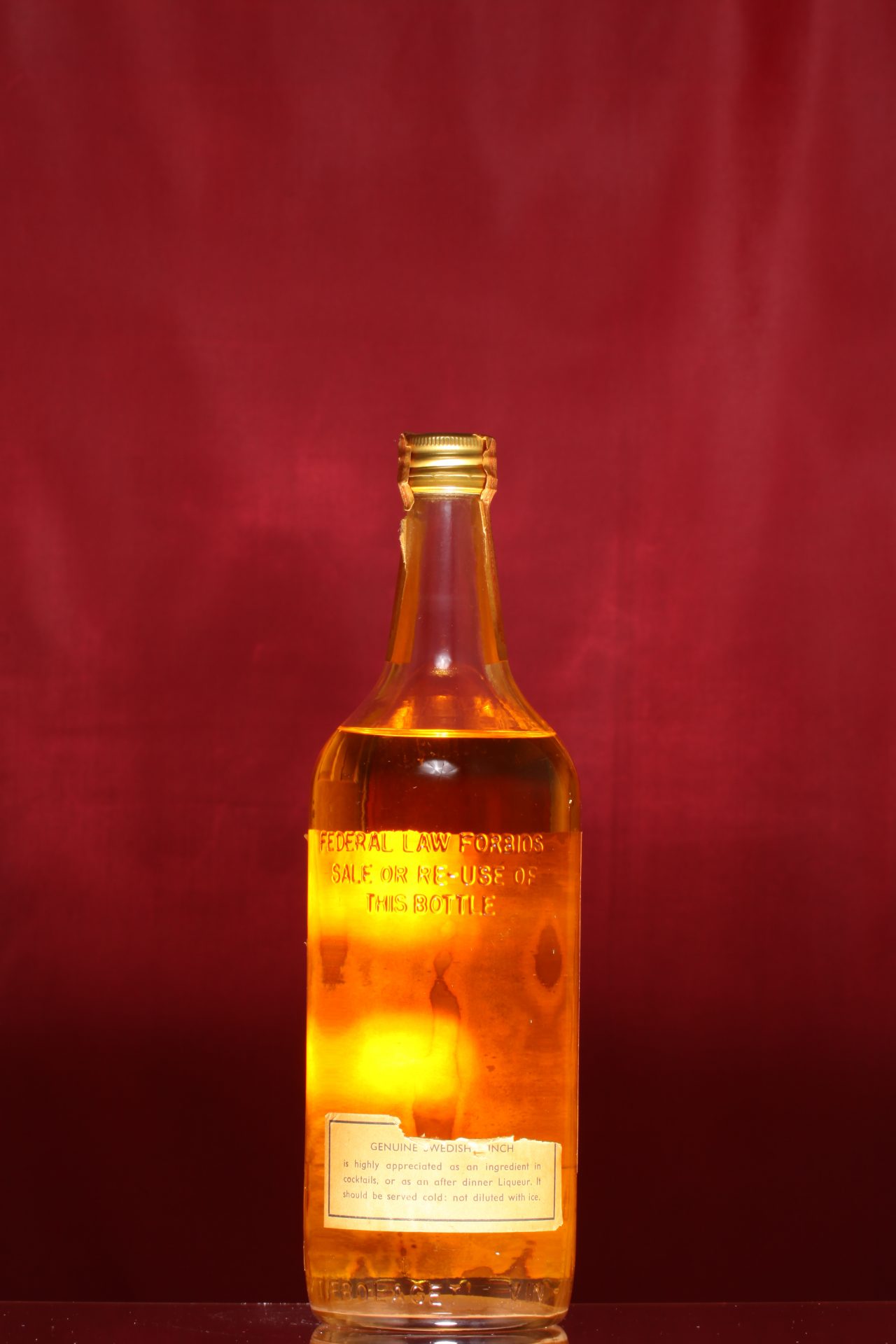SWEDISH PUNCH
| Type: | LIQUEUR |
| Flavor: | Arrack & Sugar |
| Made From: | Arrack & Sugar |
| Produced By: | A.-B. VIN- & SPRITCENTRALEN |
| Origin: | Gothenburg, Sweden |
| Proof: | 52 |
| Age: | 0 |
| Importer: | |
| Location: |
Punsch (also known as Arrack Punch, Caloric Punch or Punch) is a traditional liqueur in Sweden and to a lesser extent some other Nordic countries produced from arrack, neutral spirits, sugar, water, and various flavorings. Arrack, originally a strong Indian liquor, was imported from Java and became the base ingredient for making punsch.
Although they both refer to certain kinds of mixed beverages with liquor as a base ingredient, traditional Swedish Punsch is different from punch. Both names probably come from the same source: a Hindi loanword for five, referring to the traditional number of ingredients. The Swedish East India Company started to import arrack with the arrival of the ship Fredricus Rex Sueciae to Gothenburg in 1733. It quickly became popular, especially among the wealthy, who could afford the price of imported goods. Later it spread through all levels of society.
A testament to the widespread popularity of punsch or rack (arrack) is the songs of Swedish eighteenth century poet and composer Carl Michael Bellman. It is often mentioned in his three works Bacchi Tempel (1783), Fredmans Epistlar (1790) and Fredmans Sanger (1791) about a group of fictional characters, drunkards, bohemians and prostitutes in contemporary Stockholm.
The high point of the Punsch consumption in Sweden came during the nineteenth century and focused on the students and teachers in the universities of Uppsala and Lund. Many traditional songs from that time are about the consumption of punsch or are meant to be sung during the collective festivities that were part of the cultural life in the universities’ student associations at the time and still is.


